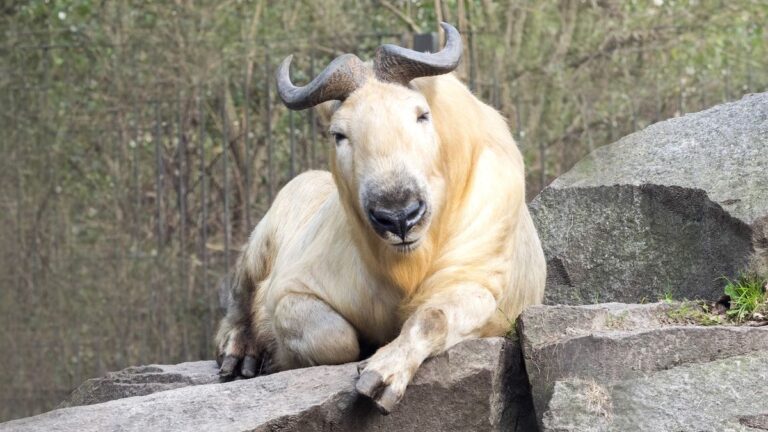
name: Tarkin (budorkas taxi color); Four subspecies: Bhutan Takin (B. Taxi color white); Golden Tarkin (B. Taxi Color Bedford); Mishimi Takin (B. Taxi color Taxi color); and Sichuan Takin (B. Taxi color Tibetana)
living place: Alpine belts and forest valleys of Asia spanning the regions of Bhutan, Myanmar, northern India, south-central China, and Tibet.
What to eat: Seasonally available plants, especially the leaves of trees and shrubs. They also eat grass and leaves. In winter, when their favorite food is not available, they eat soft twigs.
Why it’s great: The takin is a strange-looking bovid, related to cows, sheep, goats, and other artiodactyl mammals. They have moose-like snouts and short, stubby legs that support large, stocky bodies. Both sexes have wildebeest-like horns that extend from the top of their heads and curve upwards.
Their smelly, shaggy fur ranges from gray-brown to reddish-brown or chocolate brown, depending on the subspecies. Perhaps most impressively, the golden takin’s fur, as its name suggests, is a brilliant golden color. The Golden Tarkin may have been the inspiration for the Golden Fleece of Greek mythology. In the story, the adventurer Jason is sent on a journey to retrieve the wool stolen from a winged ram born by Zeus in order to regain the throne stolen from his father.
Related: Bison have been introduced to Russia’s Arctic to replace the extinct woolly mammoth. but why?
Takins live in the mountains of Asia, climbing up and down slopes in search of food. Specially adapted cloven hooves help traverse rugged, rocky terrain.
In summer, when food is plentiful and mating occurs, tachins form herds of up to 300 individuals, but in winter they split into smaller groups of about 15 to 30 individuals. Most of the herd are females. Males are solitary except during the breeding season.
Males spray urine on their legs, chest, and face, perhaps as an olfactory indicator of dominance.
Takin have few natural enemies, but snow leopards may prey on calves, while leopards, tigers, wolves, and black bears may prey on adults. When a takin senses danger, it alerts the herd with a coughing sound, causing the rest of the herd to flee into the undergrowth, where it lies down and hides.
All variants are considered vulnerable By the International Union for Conservation of Nature (IUCN) – and recent research This potentially means these goat-like mashups are at greater risk than we know.
